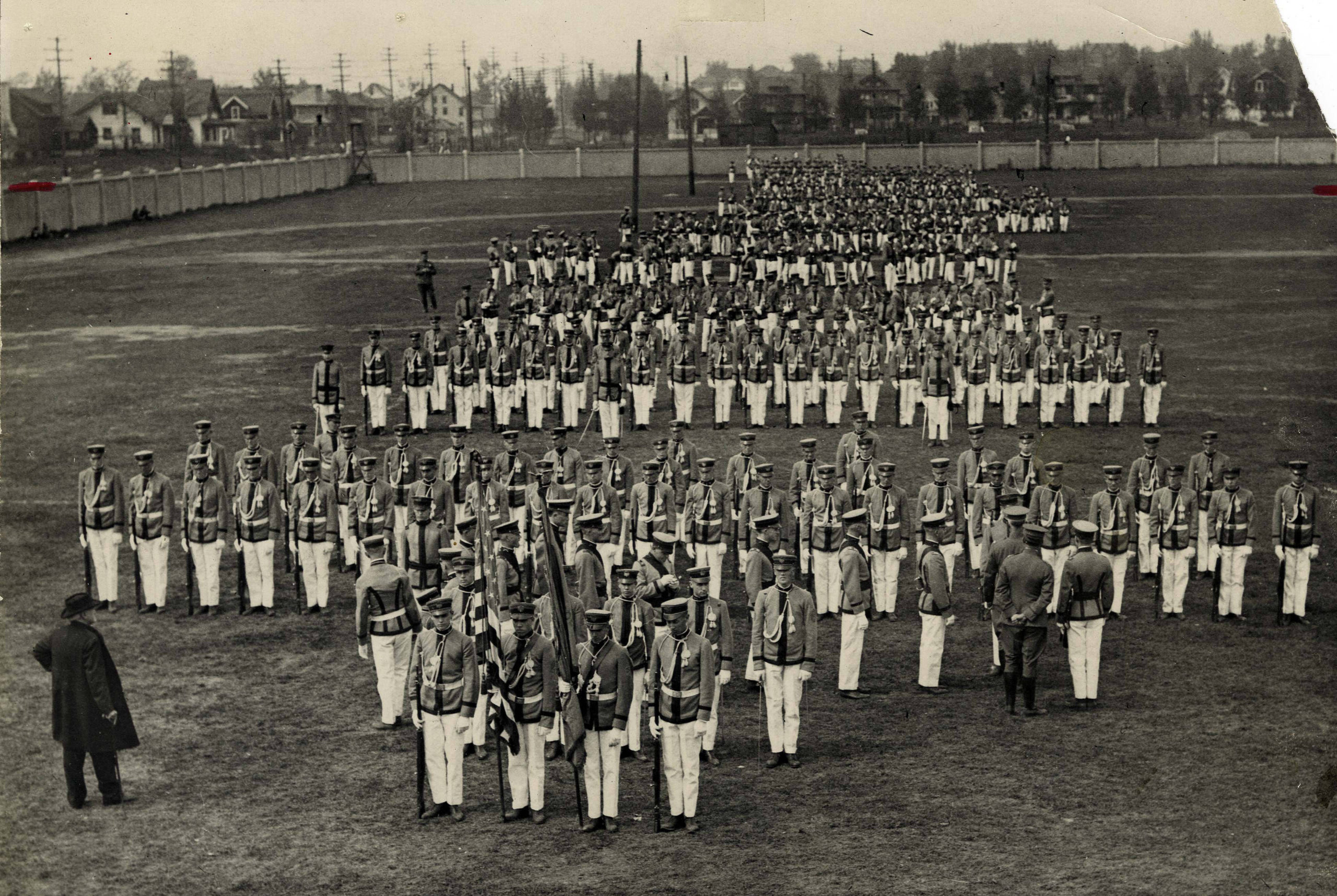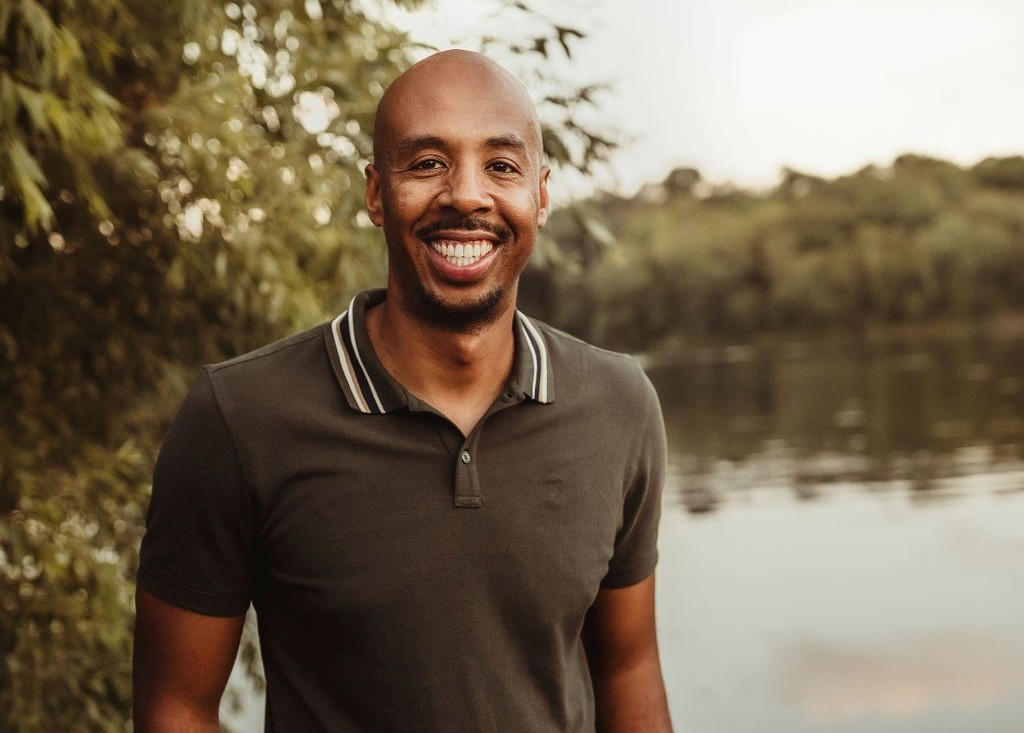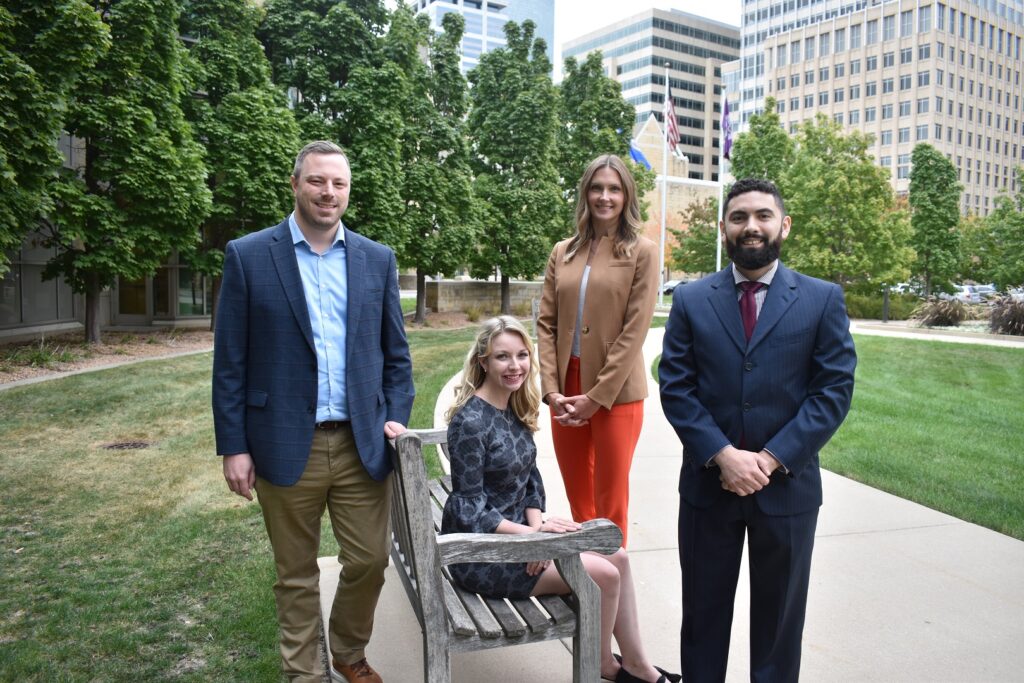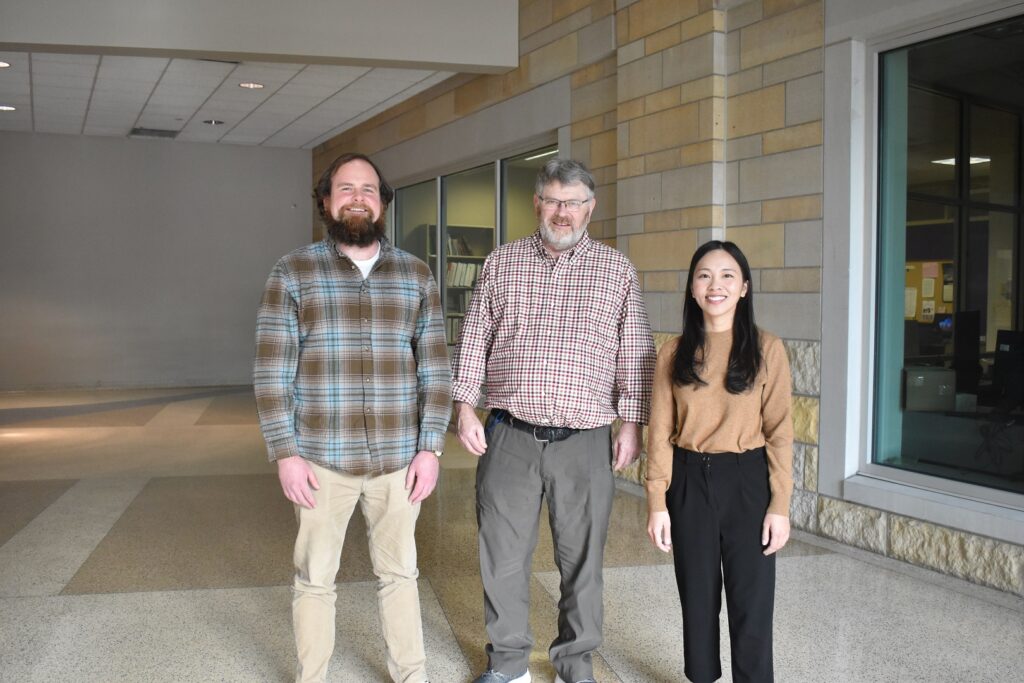When thinking about commencement at St. Thomas, most of us conjure up a familiar scene. On a sunny spring day, students and faculty march into O’Shaughnessy Stadium to the tune of "Pomp and Circumstance" wearing academic gowns and mortarboards. After listening to inspirational speeches given by visiting dignitaries, graduates line up to greet St. Thomas’ president and receive their hard-earned diplomas.
While early commencement ceremonies at St. Thomas did occasionally include an outside speaker, they were specifically designed to show off the academic skills graduates acquired during their studies. The class salutatorian and valedictorian were featured on every program. Their academic and oratorical skills were put on display as they spoke on lofty topics that ranged from the influence of Greek literature on Roman poetry to the St. Paul diocesan jubilee.
On occasion, the graduating class also presented a symposium on a specific theme as a part of the commencement exercises. Graduating students delivered a series of lectures on the intellectual thought of Pope Leo XIII during the commencement ceremony in 1903. Commencement in 1920 featured a symposium on the theme of democracy as a part of the commencement day activities.
As early as 1888, theatrical productions were often included as a part of commencement exercises. Members of the senior class performed excerpts from dramas like "Sir Thomas More" and Shakespeare’s "Richard III" or comedies like "The College Toastmaster" for the assembled audience.
During the 1900s and 1910s, commencement exercises included a military component (as St. Thomas held the designation of a military college during this period). Graduates who intended to continue as officers in the U.S. Army took part in commissioning ceremony as a part of the day’s activities. Additionally, St. Thomas students performed military drills and parades on the college’s athletic grounds for the enjoyment of the audience who came to campus for the day’s activities.
The 1920s brought the transformation to the commencement ceremony. Whether through changing attitudes or the logistics brought on by larger numbers of graduates, the ceremony morphed into the ceremony we know today.
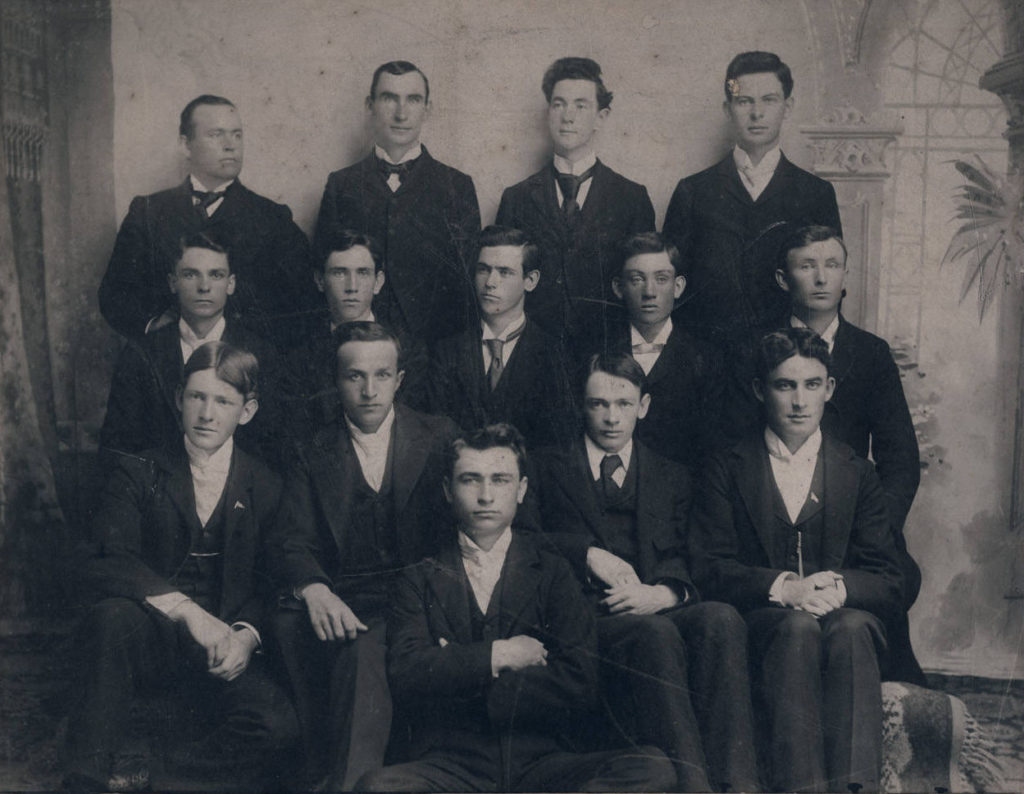
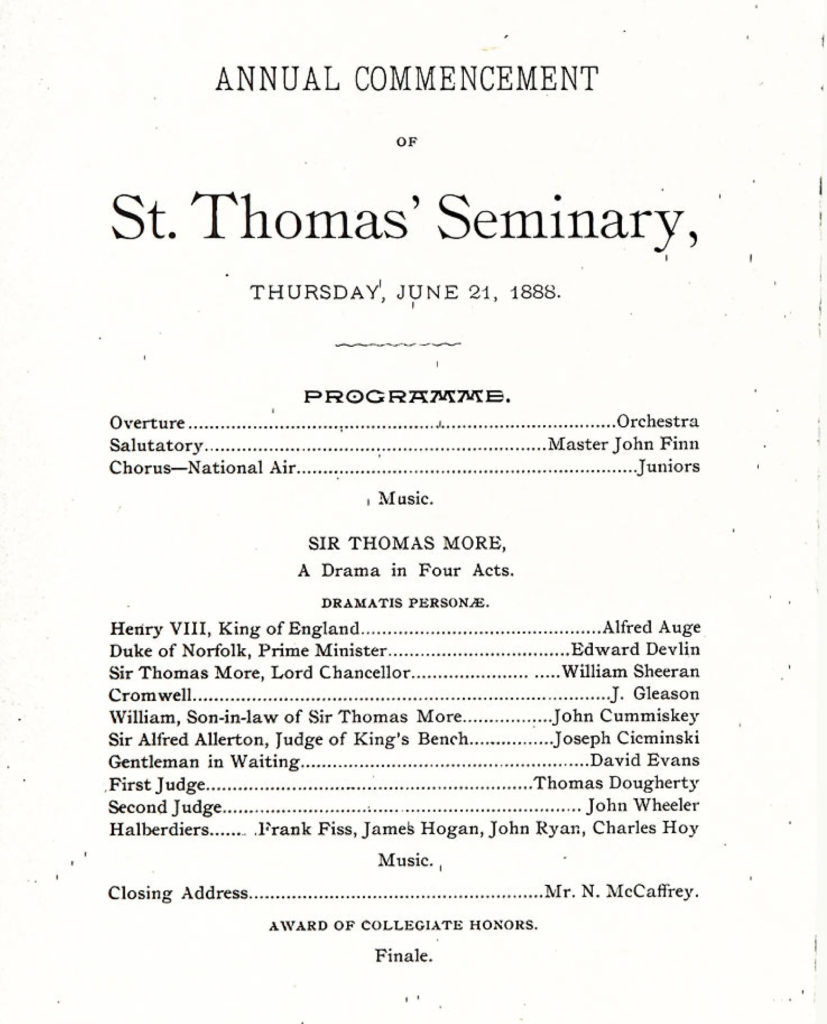

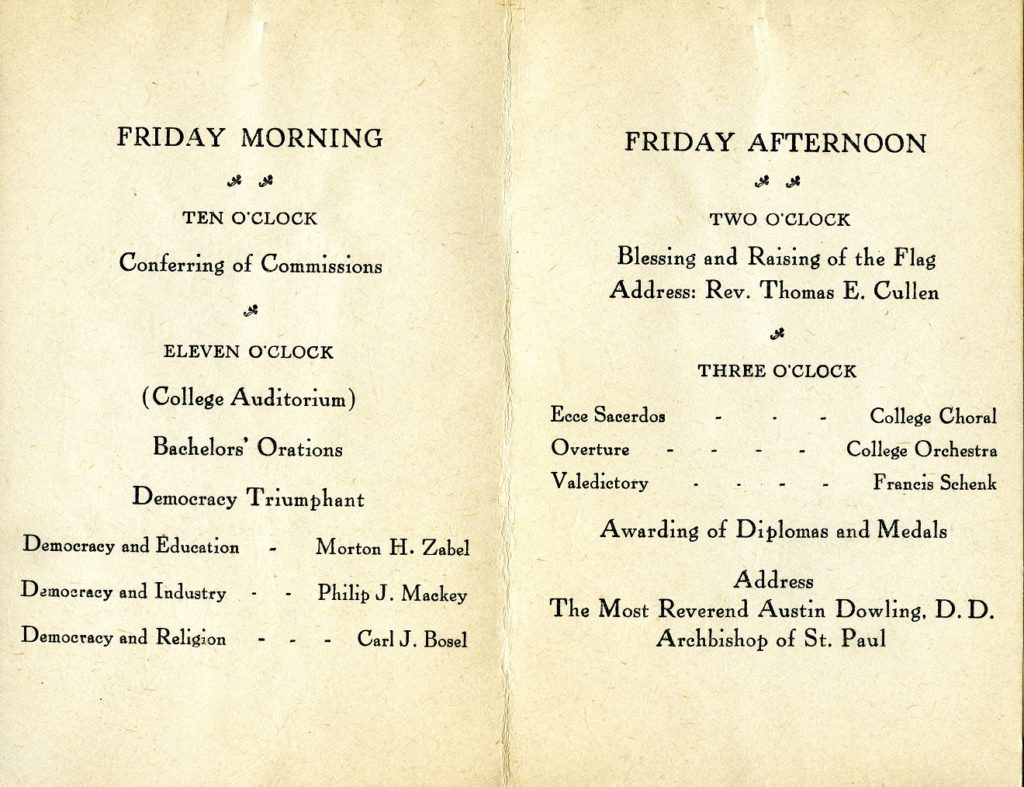
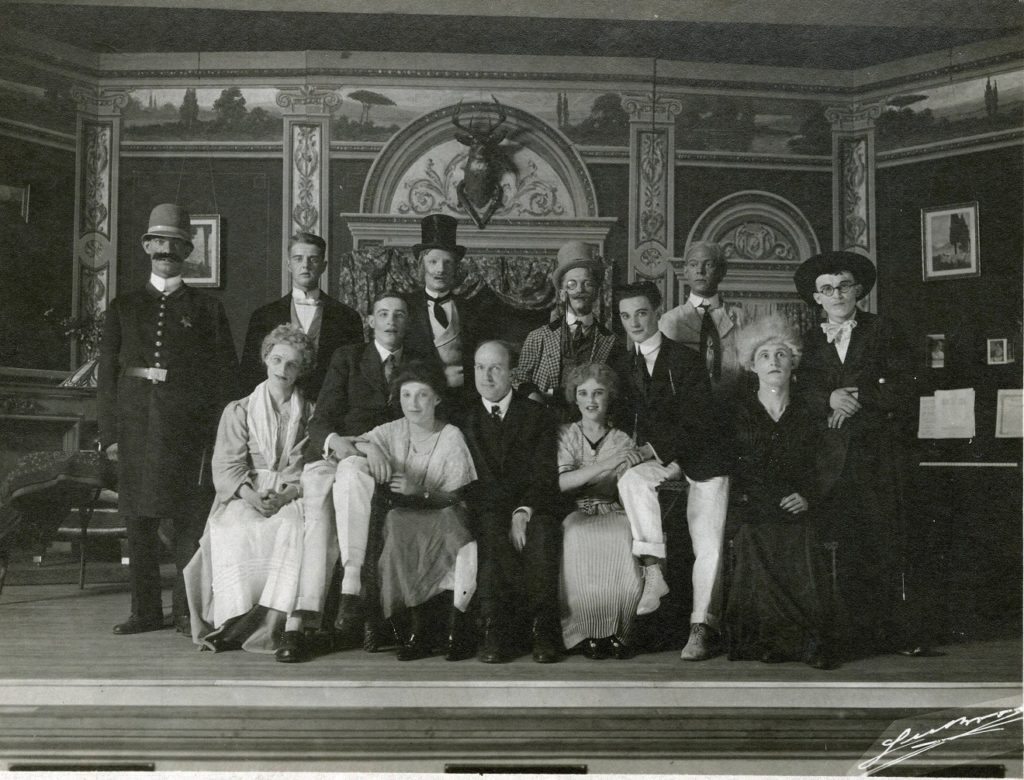
More Tales from the Archives
-
Tales from the Archives: Summit Classroom Building
University News -
Tales from the Archives: The Lenten Season at St. Thomas
Faith and Mission -
Tales from the Archives: Early Female Staff Members
People & Culture -
Tales from the Archives: Black Leaders Visit Campus
People & Culture
